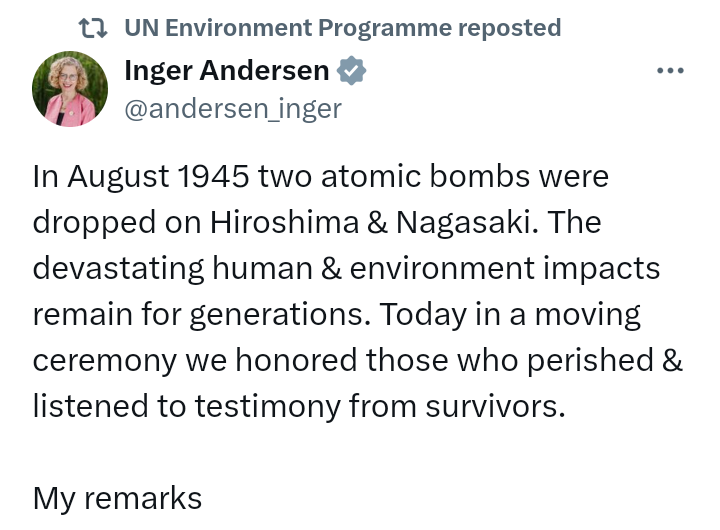Inger Andersen, Executive Director, United Nations Environment Programme (UNEP), said, “the devastating human & environment impacts of two atomic bombs were dropped on Hiroshima & Nagasaki remain for generations”.
 |
| Executive Director of the United Nations Environment Programme (UNEP), Inger Andersen. Photo: Getty Images |
“Over 200,000 people died in these cities”, UNEP revealed.
Andersen said: “In August 1945 two atomic bombs were dropped on Hiroshima & Nagasaki. The devastating human & environment impacts remain for generations. Today in a moving ceremony we honored those who perished & listened to testimony from survivors.”
According to unep.org:
Atomic Bomb Exhibitions highlights the impact of nuclear weapons and associated radiation on human health and the environment.
The bombings of Hiroshima and Nagasaki stand as a reminder of the horror that nuclear weapons unleash on people, other species and the environment. And they stand as a warning to nuclear powers to never again unleash the power of the atom in acts of violence.
Over 200,000 people died in these cities until 1945. No creature survived within a half kilometre radius of the blast site. Those who survived had no homes, jobs or lives to return to. The radiation caused many cases of cancer.
There is a space for nuclear technologies. Technologies using isotopes and selective irradiation are being used to produce hardier crop varieties that will thrive in a changing climate. To determine optimal placement and timing of fertilizers, which decreases pollution of soil and water. To monitor marine and coastal pollution and mitigate its effect on people.
But there is no place for the use of atomic weapons.


